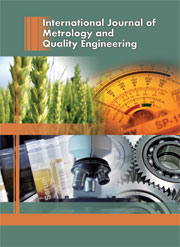Article contents
Evaporation as an ageing procedure prior to wood preservative biological testing: when standardization needs metrology
Published online by Cambridge University Press: 02 December 2014
Abstract
The wood preservation laboratory of Cirad is accredited by COFRAC (French accreditation committee – accreditation No. 1-1686) for tests on (1) durability of wood and wood-based products; (2) protective efficacy of wood preservatives; (3) efficacy of termite control products. In order to test the efficacy of wood preservatives, non-durable wood blocks are treated using different product doses and exposed to the attack of xylophageous organisms (fungi, insects). To reproduce the ageing of treated wood blocks, some laboratory procedures are available. Amongst them, there is an evaporation procedure, reproducing the action of a warm air flow onto treated wood. This ageing step is very discriminant, as only the formulations fixing effectively the active ingredients will pass the biological test afterwards. This ageing by evaporation is described in the EN73 standard. Nevertheless, many points remain difficult to overcome. The tunnels used for the evaporation are all prototypes; as such equipment is not available currently on the market. So each laboratory has got its own tunnel device. Moreover the way to measure the temperature and speed of the air flow is very difficult to achieve considering the prescriptions of the EN73 standard. The EN73 standard is being revised by the European standardization group (CEN TC38) and despite the metrological aspects were crucial and inadequate in former version, they were not considered as they should. The wood preservation laboratory has forwarded remarks in order to supersede some points of the revision document in order to consider the metrological aspects. This is of main importance as the ageing procedure is commonly used prior to most of the biological test, and such tested products are put on the market based on the efficacy results.
- Type
- Research Article
- Information
- Copyright
- © EDP Sciences 2014
References
- 1
- Cited by


